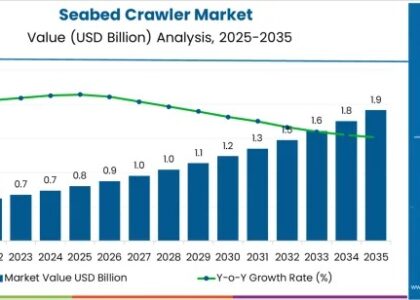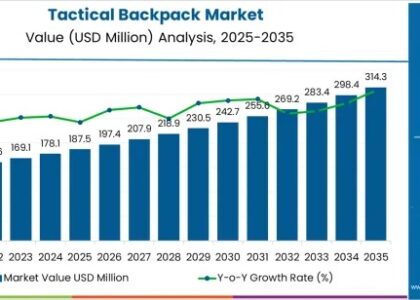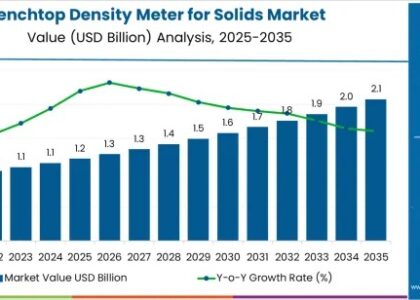The Graphics Processing Unit market is projected to attain a CAGR of 32%, exceeding USD 1,964,718 million by 2035, compared to USD 122,337 million in 2025. The rising implementation of GPUs in autonomous vehicles, metaverse applications, and high-performance computing (HPC) is likely to drive long-term market growth.
They began as tools for rendering pixels in video games—but today, Graphics Processing Units (GPUs) are the silent engines behind some of the most transformative technologies in the world. From high-fidelity gaming and cinematic visual effects to artificial intelligence, autonomous vehicles, and scientific computing, GPUs have evolved far beyond their graphic roots.
You won’t always see them. You might not even realize when they’re working. But behind every real-time rendering, machine learning model, or blockchain transaction, a GPU is likely doing the heavy lifting—at blistering speeds and with incredible efficiency.
Get Ahead with Our Report: Request Your Sample Now!
https://www.futuremarketinsights.com/reports/sample/rep-gb-18664
Beyond Graphics: Parallel Power at Scale
What sets GPUs apart is their ability to perform thousands of tasks simultaneously. Unlike CPUs, which are optimized for sequential processing, GPUs are built for parallel execution—making them ideal for workloads like deep learning, 3D rendering, simulation, and complex data analysis.
As data grows more complex and computational demands skyrocket, GPUs are becoming indispensable across industries—not just as accelerators, but as the backbone of modern computing infrastructure.
Overshadowed by End Products, Driving Innovation at the Core
Smartphones, cloud platforms, self-driving cars, and even virtual assistants owe much of their power to the GPU, yet the hardware often remains in the shadows. While end-user applications steal the spotlight, GPUs quietly fuel the performance that makes them possible.
AI breakthroughs, cinematic realism, and real-time medical imaging—none of it happens without GPU-driven computation. These chips have become the core innovation enablers for sectors far beyond entertainment and gaming.

The Engine Behind AI and Machine Learning
Modern AI wouldn’t exist without GPU acceleration. Training neural networks involves processing enormous datasets and performing millions of calculations—tasks that GPUs handle faster and more efficiently than general-purpose processors.
This computational advantage has made GPUs the standard for data centers, research labs, and startups developing cutting-edge AI models. Whether it’s natural language processing, autonomous navigation, or generative content creation, GPUs are the infrastructure powering the intelligence.
Shaping the Metaverse and Virtual Experiences
The rise of immersive digital environments, from VR gaming to enterprise simulations, depends on real-time rendering and responsiveness. GPUs enable lifelike visuals, fluid animations, and physics-based interactions that define the user experience in these spaces.
As the metaverse concept matures, GPUs are playing a central role in turning high-concept visions into interactive, believable worlds—rendered instantly and scaled to millions of users.
From Cloud to Edge: Ubiquity in the Computing Landscape
GPUs are no longer confined to desktops or data centers. They’re now embedded in smartphones, vehicles, IoT devices, and edge servers—bringing powerful processing closer to where data is generated. This distributed power enables real-time analytics, faster decision-making, and intelligent automation across diverse environments.
As businesses push to decentralize computing and reduce latency, GPUs are the go-to solution for consistent, scalable performance from edge to cloud.
Exhaustive Market Report: A Complete Study
https://www.futuremarketinsights.com/reports/graphics-processing-unit-market
Innovation, Efficiency, and Specialization
The GPU market is also diversifying. Vendors are now designing domain-specific architectures optimized for AI inference, scientific visualization, or creative workflows. These next-gen GPUs focus not just on raw speed, but on energy efficiency, modular design, and ecosystem integration.
This shift is enabling organizations to choose hardware that matches their workload—whether they’re editing 8K video, running genome sequencing, or building the next big game.
The Silent Powerhouse of the Digital Age
They don’t glow on screens or speak in commands, but GPUs are quietly driving the digital experiences and breakthroughs that define our time. As technology trends converge—AI, gaming, simulation, immersive media—the GPU is at the center, delivering the muscle to move innovation forward.
Ignore the GPU, and performance lags behind ambition. Invest in it, and you gain access to a computing platform capable of scaling ideas into reality—no matter how visually rich, data-heavy, or time-sensitive. In the new era of intelligent systems and immersive experiences, the future isn’t just visual—it’s accelerated. And the GPU is what makes it possible.






